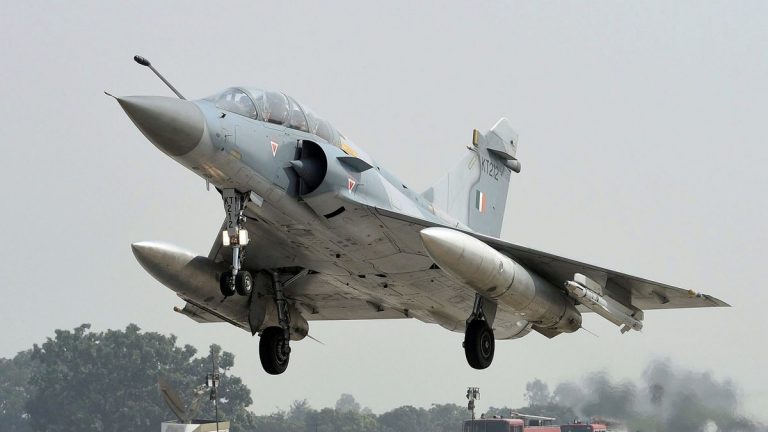
Table of Contents
SOURCE: THE PRINT
India this week came out with a negative import list for defence equipment, ostensibly to boost the ‘Make in India’ programme. However, a look at some big-ticket ‘Make in India’ projects does not inspire confidence — most projects begun in the last six years under the Narendra Modi administration, or even those dating back two decades, have failed to get off the ground.
Here are some major initiatives that have been stuck for years.
Fighter jets
In 2001, the Indian Air Force initiated the process for the induction of new fighters. The plan was to start making the French aircraft Mirage 2000 in India. Mirage’s original manufacturer, Dassault Aviation, had offered to shift the assembly line of the aircraft from France to India.
It had, at the time, decided to shut down the Mirage line to pave the way for Rafale fighter jets. By 2004, India had decided to float a global tender for the Medium Multi Role Combat Aircraft (MMRCA) rather than manufacture the Mirage 2000. It was only in 2007 that a global Request for Proposal (RFP) was issued, in which the Rafale emerged as the winner in 2012.
However, with negotiations going nowhere, the Modi government went in for 36 Rafale fighters to be bought off the shelf. The plan was to then bring out a tender for 114 fighters, which would be manufactured in India. But a tender is yet to be issued. Technically, the plan to manufacture a modern fighter aircraft has been pending since 2001. This project is expected to cost over Rs 1.5 lakh crore.
Six conventional submarines with new technology
This project, P75I, was first accorded sanction by the defence ministry in 2007, but is still to get started. The procurement of the six diesel-electric submarines with Air Independent Propulsion (AIP) system also figures in the negative import list put out by the defence ministry.
A formal tender under strategic partnership is expected to be issued soon, and the frontrunners for this contract are state-run Mazagon Dock Shipbuilders Limited and private player Larsen & Toubro.
Light utility helicopters — Kamov
The Modi government announced a mega deal for 200 Kamov 226T choppers to replace the ageing Cheetah and Chetak fleet in 2015, but it’s far from complete.
The main issues are cost and indigenisation, sources said. The India-Russia joint venture set up to make the light utility choppers in India is not expected to meet the 70 per cent indigenous content requirement.
Assault rifles
This was supposed to be a mega order for the armed forces, which have been struggling to replace their INSAS rifles for over two decades.
When the deal was first announced in 2018, there was a lot of excitement. However, the deal continues to be a work in progress. The delay has forced the Army to order SiG 716 rifles from the US under a fast-tracked process to arm its frontline troops.
With 72,000 SiG rifles already delivered, the Army is now pursuing emergency procurement of another 72,000.
The Indo-Russia Rifles Private Limited, a partnership between the Ordnance Factory Board (OFB), the Kalashnikov Concern and Rosoboronexport (the Russian state agency for military exports) have failed to arrive at an offer price for the AK 203 rifle.
It was expected that the price of each rifle would be around $1,100 per piece, but it has risen due to a number of issues. The defence ministry has now constituted a committee to break this logjam.
Naval utility helicopters
Another defence procurement project that remains tied up in knots, the nearly $3 billion deal for the Naval utility helicopter could become the first challenge for the Modi government under the new ‘aatmanirbhar’ initiative in the defence sector.
This is because the state-run Hindustan Aeronautics Limited (HAL) is pushing for its inclusion in the programme, while the Navy is strictly against it.The helicopters are set to replace the Navy’s Chetak choppers.
C295 transport aircraft
The Defence Acquisition Council had cleared the IAF’s plan to buy 56 C295s in 2015, but the contract is yet to be inked. The Air Force had selected the C295 as the replacement for its ageing fleet of Avro 748 transport aircraft that first flew in 1961.
Under the deal, the first 16 aircraft were supposed to be built at the Airbus facility in Spain, and the remainder by Tata Advanced Systems Limited. C295 is a multi-role transport aircraft that can carry a maximum payload of 9.25 tonnes. Since its dimensions are smaller than the IAF’s fleet of C-130Js, C-17s and IL-76s, C295s can take off and land at many air strips and airports where the larger ones can’t.
Mine counter-measure vessels
This is another project that is likely to see a fresh tender. The defence ministry under Manohar Parrikar had nominated the Goa Shipyard and a South Korean firm to build 12 mine counter-measure vessels, with the contract worth over Rs 30,000 crore.
The Navy has been seeking these vessels since 2005.






